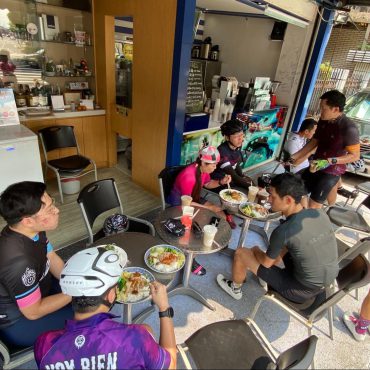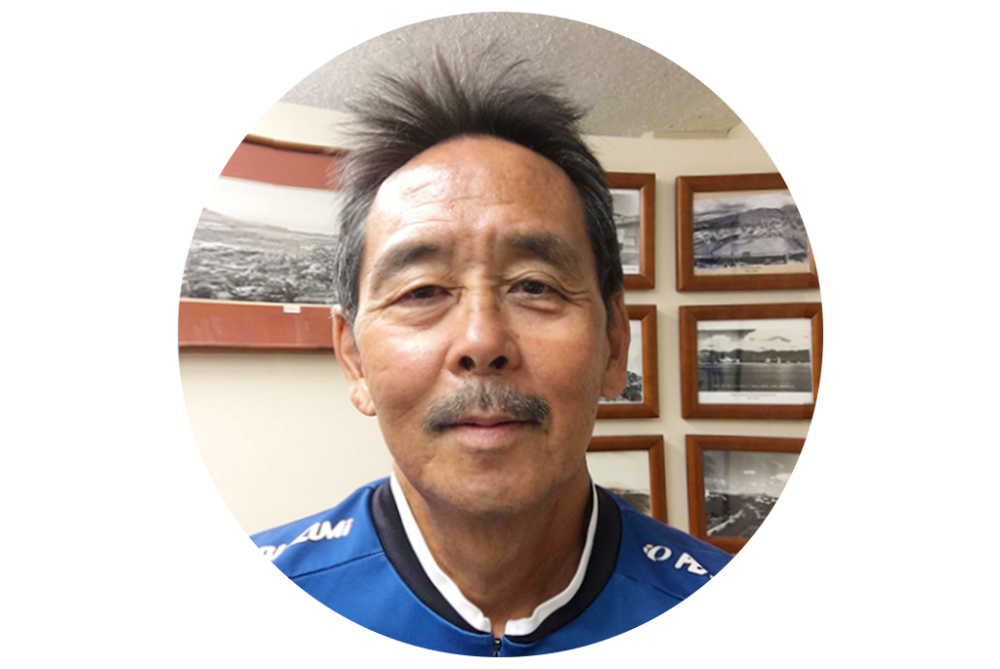
Taiwan Hill Climb Ride Report
This is a 14-mile (23 km, 47 km round trip) one-way ride from Aiea, the northern area of Daniel K. Inouye International Airport in Hawaii, to Ewa Village, Kapolei and Ko Olina on the Pearl Harbor Bike Path.
Following the Waikiki Ride and the Kakaako Ride, Rod, a loco(local) rider, will introduce the Pearl Harbor Bike Path, a popular cycling course unknown to tourists, from “Hawaii,” a foreign country with which Japanese people feel familiar.
*This article is a reprint of September 2021 article.
A 14-mile (23 km, 47 km round trip) one-way ride from Aiea, the northern area of Daniel K. Inouye International Airport in Hawaii, USA, to Ewa Village, Kapolei and Ko Olina on the Pearl Harbor Bike Path.
I usually enjoy cycling as a weekend activity with a group of familiar faces.
We call each other “Makule Rider” (meaning “old man” in Hawaiian) when we ride together.
Here are some of our favorite routes.

First, we will gather at Neal S. Blythe Dell Park, a park in the Aiea area overlooking Pearl Harbor, a large bay located on the south side of Oahu. From this park, we will begin the main route of the day, the Pearl Harbor Bike Path.

The quiet park with its nice atmosphere is used by many locals who enjoy picnics, running, and walking. And of course, for riders, the park is the starting point for cycling.

The Pearl Harbor Bike Path, which traverses this park, is a paved bike path along the oceanfront at Pearl Harbor. Since I used to live in this area, this park and bike path has been my favorite training course.

It’s a safe place to ride with no cars on the road. Let’s ride from here to the west area today.
Looking out to sea from the park, you can see Ford Island in Pearl Harbor Bay.

Pearl Harbor, as it is known, was the site of the attack on Pearl Harbor in World War II. In this area, visitors can see various facilities to preserve the memory of that time.
The two most prominent spots are the Arizona Memorial Battleship and the Battleship Missouri Memorial on Ford Island.
As some of you may know, the Arizona Memorial Battleship was built on top of the Arizona, which sank in the attack on Pearl Harbor. On the other hand, the deck of the adjacent Battleship Missouri was the setting for the Potsdam Declaration, which Japan signed in order to surrender.
The two battleships stand side by side, symbolizing the beginning and end of World War II.
Another bell tower, the “Bell of Peace,” was erected at Neal S. Blythe Dell Park, the starting point mentioned earlier.

This hall was a gift from a temple in Kagoshima in 1991, the 50th anniversary of the attack on Pearl Harbor. No nails were used, and craftsmen were invited all the way from Japan.

Not only historical monuments and spots, but also battleships still in use can be seen at the bay.
Riding around looking at battleships old and new, you will realize that Pearl Harbor is still a naval port.
Ride further west from Neal S. Blaisdell Park. The factory-like building you will soon see on your right is the Waiau Power Plant.

In 1938, Hawaiian Electric, a power company, opened the second power plant on Oahu to supply electricity to military installations and local farmers.
Beyond the power plant are taro and watercress farms.


Through the ride, visitors can get a sense of the local agriculture that supports Hawaii’s food supply.
In the field, there is a sign that reads “No steal my Taro” (don’t steal my taro) and many shoes hung on a palm tree, which may be a joke or a bit humorous.



If you look closely, you will also see a sign that reads “Go Bows,” which is the nickname of the University of Hawaii’s Rainbow sports club team.
I don’t know if club teams use this path for training, but apparently the owner of the field is an avid college sports fan.
After that, once you leave the oceanfront, ride along the highway. When we enter an area called Waipahu District and see a golf course, the Pearl Harbor Bike Path is almost at its end. However, there are more fun areas ahead, so here is our ride as we continued on.
Just to the right of the end of the bike path, you will see Ishihara Plantation Tea Cookies.

A traditional sweets shop that has been a local favorite for over 100 years. Although the name “cookie” is used, the products here are not rich, buttery cookies, but rather crispy, light, and simple rice crackers. It is a type of so-called “soda senbei,” a Japanese confectionery.
Beyond this point, heading further northwest, you will find a gorgeous Lao Buddhist temple, “Wat Lao Sithammaram of Hawaii,”,

Tenrikyo Aloha Church, one of the Tenrikyo churches in Hawaii,

The area offers a variety of cultural, religious, and historical experiences.
One of the spots where you can feel the history is Ewa Village, which you will reach further on.
This town began in 1890 and was inhabited by laborers working on sugar cane farms, a major industry at the time.

The town was settled not only by Hawaiian Islanders, but also by workers who immigrated from Japan, the Philippines, and Korea, so there is a temple in this town as well.

Ewa Hongwanji Temple was built here in 1901 to promote Jodo Shinshu.
Today, it is a quiet residential area surrounded by golf courses, but there are still remnants of the good old days in the town, including the Ewa Hongwanji Temple mentioned earlier and a monument to the wheels of a sugar cane train that once ran.

Turning right from the previous road and riding along Lenton Road, which crosses the town, you will come across a railroad track that runs parallel to the bike path.
This track was used by the Oahu Railway and Land Company, which operated the railroad in Oahu from 1889 to 1947.
They were used not only to carry people, but also to transport sugarcane and crops harvested in the area.
Sugarcane transported to the port of Honolulu was shipped further out of the island, generating a lot of profit.
Although the line is now abandoned, visitors can enjoy the attraction of riding in a restored vintage locomotive at the Hawaiian Railway Museum, located just beyond the tracks.




The red train does not move, but the green carriages connect to the yellow engine and actually run. This is a popular spot for family tourists.
Another train-related topic I would like to introduce is this metal plaque embedded in several places along the Pearl Harbor Bike Path that we just passed.

These markers are called Oahu Rail Markers and indicate how far this point is from the Honolulu Harbor Station (Honolulu Depot).
The plate I took was at the end of the bike path. You can see that it is about 11 miles (less than 18 km) from here to the station.
With the Railroad Museum on your left, turn right off Lenton Road onto Kapolei Parkway and you will soon arrive in the neighboring city of Kapolei.
Kapolei was established in the 1950s as the second major city on Oahu after Honolulu to promote sugarcane and pineapple agriculture.
Compared to the high-rise buildings of Waikiki, this area has large low-rise buildings built on large lots, giving it the feel of being on the U.S. mainland.
Redevelopment of the area in the 1980s resulted in the construction of many residences, a large shopping center, schools, parks, a police station, a satellite city hall, and a hotel.
Because of its extensive functions, residents do not need to travel all the way to Honolulu. Government procedures and shopping are all done right here in town.

This is Ka makana Ali’i, the newest and fastest growing shopping center in Kapolei.
There are over 100 stores, restaurants, and theaters in the area. The Hampton Inn & Suites Oahu/Kapolei was the first hotel built in the area.
In addition, the satellite city hall, Kapolei Hale, was built for the people of Kapolei.

Drive to the end of this Kapolei Parkway and you will see the train tracks. A gravel road running parallel to the tracks and eventually connecting to Ali’inui Drive will take you to “Ko Olina,” a resort area on the west coast of Oahu.
We took a break at this Ko Olina shopping mall. We turned around and returned to the starting point.
The Honolulu Rail Transit, a railroad under construction, happened to be making a trial run.

Honolulu Rail Transit is a railroad under construction that will connect Kapolei to Daniel K. Inouye International Airport and Ala Moana Center.
I hear that the project is not progressing as planned, but I am looking forward to riding it when it is completed.
We thought the Pearl Harbor Bike Path, with its rustic scenery, would be perfect for Japanese riders who want to get away from the hustle and bustle of Waikiki and do something a little different from their usual Hawaii sightseeing.
The course is a bit far from tourist areas and there are no streetlights, so care must be taken to return during light hours, but other than that, the route is simple and easy to run.
While riding on the bike paths, you will be able to enjoy the scenery of rural areas, the ever-changing newest spots, and the diverse culture and history of Hawaii behind the scenes.

On another day, from the start of the route I just described (Neal S. Blythedell Park), I rode east this time on the Pearl Harbor Bike Path.
This bike path extends to near the Arizona Memorial. (Please note that you will be traveling on Kamehameha Highway beyond the bike path, so be careful of cars if you want to go that far).
On the way to the Aiea area, you will find The Bike Shop right next to Bike Path. This is a branch of the store introduced on the Waikiki Ride.

Just down the street is a very popular local restaurant, Forty Niner Restaurant. Saimin, burgers, loco moco, etc. are all very popular.


Born and raised in Hawaii.
Fifteen years ago, he became involved in the Honolulu Century Ride, Hawaii’s largest long ride event, and was hooked on the allure of road biking. Today, he enjoys cycling every weekend in his hometown with three friends as the “Makule (Hawaiian for “old man”) Rider’s. His favorite drink is Miller draft beer.
Post Date:2021.09.11